
Rajkapoor 100!
Dec 08 2024
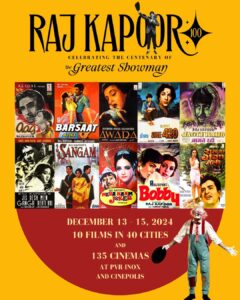
Raj Kapoor 100 – Celebrating the Centenary of the Greatest Showman
In the run-up to ‘Raj Kapoor 100 – Celebrating the Centenary of the Greatest Showman’ – the biggest retrospective ever to celebrate an icon of Indian cinema –SICA looks back at some of the icon’s milestone films and enduring legacy.
Referred to as the “Greatest Showman of Indian Cinema,” Raj Kapoor (1924–1988), born Srishti Nath Kapoor, was a producer, actor, and filmmaker who left an indelible mark on the history of Indian cinema. Born to actor Prithviraj Kapoor and Ramsarni Kapoor, he later adopted the name Ranbir Raj Kapoor and first appeared on screen as a child actor in Inquilab (1935). Kapoor’s journey as a filmmaker began after assisting Kidar Sharma at Bombay Talkies, working as an art director at his father’s Prithvi Theatre, and later starring in Neel Kamal (1947), which marked the takeoff of his acting career.
A Pioneer of Indian Cinema
In 1948, Raj Kapoor founded the iconic R.K. Films studio, producing timeless classics that transcended borders and earned international acclaim. His directorial debut, Aag (1948), announced the arrival of a cinematic visionary. Kapoor’s versatility shone in classics like Barsaat (1949), Awaara (1951), Boot Polish (1954), Shree 420 (1955), Jagte Raho (1956), and Sangam (1964), the latter being one of the first Indian films extensively shot abroad, in London, Paris, Venice, and Switzerland.
Bobby (1973), another landmark, is credited as India’s first mainstream teenage love story. Its influence extended beyond cinema, sparking a fashion revolution with “Bobby shirts” and wide collars becoming nationwide trends. Tailors across India saw a surge in demand for the styles popularized by Kapoor’s films.
Cinematic Innovations
Raj Kapoor’s films were known for their technical finesse and narrative depth. He was a master editor, renowned for his use of lengthy dissolves to transition between scenes, creating a dreamlike quality in films like Satyam Shivam Sundaram (1978). His attention to detail extended to his collaboration with cinematographer Radhu Karmakar, who worked with him on most of his films, bringing a distinct visual style that balanced realism with artistic grandeur.
Kapoor also broke conventions with Mera Naam Joker (1970), which featured two intervals—a first for Indian cinema. Though it initially received mixed reactions, the film is now regarded as a masterpiece, encapsulating Kapoor’s vision of life as a circus, filled with laughter and sorrow.

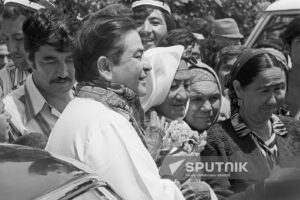
Themes and International Recognition
Class struggles were central to Kapoor’s storytelling, with scripts by K.A. Abbas that resonated with post-Partition audiences. Films like Awaara and Shree 420 captured the aspirations and moral dilemmas of a modernizing India. Awaara achieved unprecedented popularity in the Soviet Union, where Kapoor was celebrated alongside global icons like Charlie Chaplin and Marilyn Monroe.
Kapoor’s commitment to technical innovation and artistic experimentation also led him to compete at international film festivals. Awaara and Boot Polish were contenders for the Grand Prize at Cannes in 1953 and 1955, respectively, while Jagte Raho won the Crystal Globe at Karlovy Vary in 1957.
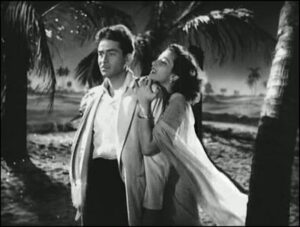
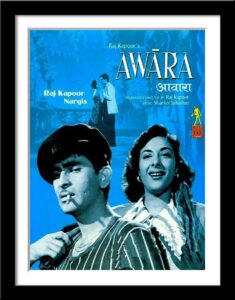
Kapoor’s Awaara was a landmark not just for Indian cinema but also on the global stage. The film’s iconic “Dream Sequence” (Ghar Aaya Mera Pardesi) showcased Kapoor’s visionary approach to set design and storytelling. The elaborate dream sets, combined with atmospheric wind flows to stylize Nargis’s sensuous appeal, added a surreal quality to the sequence. Nargis’s beauty was further accentuated by Kapoor’s inventive use of lighting and dynamic hair flow techniques.
The film also featured modern dialogue writing that resonated with the contemporary audience, blending traditional values with modern sensibilities. The exploration of class divides and moral ambiguity cemented its position as a timeless classic.
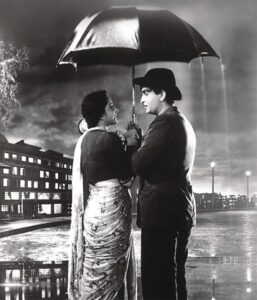
Shree 420 (1955):
With Shree 420, Kapoor perfected the art of visual storytelling. The film’s novel narrative structure interwove romance, satire, and social commentary. Iconic shots like the rain-drenched song Pyaar Hua Iqraar Hua remain etched in cinematic history, symbolizing love amidst adversity. The film’s themes of morality, ambition, and the human spirit found universal appeal.
Boot Polish (1954):
Boot Polish broke away from traditional storytelling to highlight the struggles of orphaned siblings. The film’s innovative narrative structure and heartfelt performances introduced a new dimension to Indian cinema. Kapoor’s focus on realism and human resilience resonated deeply with audiences and critics alike, earning international accolades.
Awards and Legacy
Raj Kapoor was honored with the Padma Bhushan in 1971 and the Dadasaheb Phalke Award in 1988. He won 11 Filmfare Awards and left behind a legacy of excellence in Indian cinema. His studio, R.K. Films, remains a symbol of cinematic brilliance.
Kapoor’s untimely death in 1988, following a collapse during the Dadasaheb Phalke Award ceremony, marked the end of an era. However, his contributions continue to inspire generations of filmmakers and audiences worldwide.
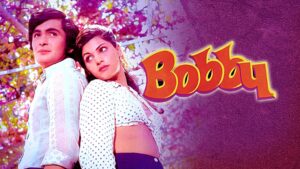
Trivia and Fun Facts
Fashion Icon: Bobby sparked India’s first teenage fashion craze with “Bobby shirts” and wide collars becoming a rage.
First Abroad Shooting: Sangam was the first Indian film to feature extensive shooting abroad, setting a trend for future filmmakers.
Radhu Karmakar’s Genius: Kapoor’s trusted cinematographer, Radhu Karmakar, brought a unique aesthetic that defined the visual appeal of his films.
Two Intervals: Mera Naam Joker was the first Indian film to include two intervals, reflecting its ambitious, multi-chaptered narrative.
Editing Mastery: Kapoor’s signature use of lengthy dissolves elevated the emotional intensity of his storytelling, blending scenes seamlessly into one another.
This celebration of Raj Kapoor’s centenary is not just a tribute to his genius but also a testament to the enduring impact of his work on Indian cinema and culture.
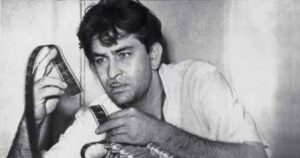
Raj Kapoor: ‘I dream cinema, I breathe cinema and I live cinema’
Article by CJ Rajkumar
Author/ Cinematographer
